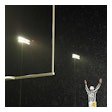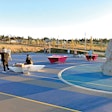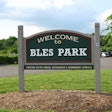![Baker High School in Baldwinsville, New York. [Image courtesy Eaton's Ephesus Sports Lighting]](https://img.athleticbusiness.com/files/base/abmedia/all/image/2018/06/ab.Ephesus%20Lighting_Baldwinsville.png?auto=format%2Ccompress&q=70&w=400)
This sponsored content was provided by Eaton's Ephesus Lighting. What is sponsored content?
As operators and owners of sports facilities of all sizes consider switching from legacy lighting to energy-efficient and controllable state-of-the-art LED sports lighting, it’s important that they begin the process with a clean slate. Even though LED lights serve the same purpose as legacy lighting products, the technological advances have made old design requirements as antiquated as the metal halide fixtures.
“Very often we are asked to respond to an RFP that was developed by a third party or even another lighting company that ignores the nuances and advantages solid state LED lighting has over legacy lighting,” said Mike Lorenz, President of Eaton’s Ephesus Lighting. “It’s important that facility owners and operators learn how to design their lighting requirements to accommodate these new technologies. For example, if you used specs for a new phone system developed before the advent of wireless telephones, the clause specifying the optimum length of the phone cord would immediate disqualify your wireless solution.”
Here are three misconceptions for sports facility design LED lighting requirements.
Remote Not Required
For over 50 years, sports lighting had been powered by a remote power supply, referred to as a ballast or driver. The belief was that a remote ballast at ground level was more convenient for necessary maintenance, and the added weight of ballasts mounted high on the pole would negatively impact the infrastructure. Those concerns are no longer valid. LED sports lighting is virtually maintenance-free and LED fixtures with a built-in driver are commonplace. Since many operators make the move to LED to help save on energy costs, a remote ballast is counterproductive as extra power is needed to compensate for the distance between the ballast and light source.
- LESSON LEARNED: A remote power source/ballast adds operational costs to a solid-state LED lighting system and – prevents functionality such as full dimming ranges and enabling entertainment scenes.
LIGHT, REVOLUTIONIZED: View More From This Series
Direct Versus Reflective
Legacy sports lighting products are easily recognizable by the big hoods that help redirect light, via reflection, to the playing surface and control glare. Due to the technological limitations, the hood was an important tool to reflect the light to the playing surface. But with digital LED lighting, engineers now can direct the light through internal refractive optics. Whereas reflective lighting redirects the light to the playing surface after it emanates from the fixture, refractive light is precisely modulated internally, to consistently control glare, cutoff and light spill while being delivered directly and efficiently to the playing surface.
- LESSON LEARNED: Reflectors limit the efficiency of the fixtures by generating unnecessary light that gets redirected. Well-designed LED lighting solutions can control the light internally and deliver it precisely with no need for external reflectors.
Maytag Repairman Syndrome
The precision and reliability of LED sports lighting has made 25-year extended warranties as obsolete as the technology they replace. Extended warranties add unnecessary costs since LED technology practically eliminates the need for “routine maintenance.” And as many consumers have experienced with extended warranties for an automobile or appliance, there are many exclusions that protect the manufacturer more that the customer.
- LESSON LEARNED: If an LED sports lighting manufacturer is boasting about their extended warranty, ask yourself if they have a lack of confidence in their product, a lack of understanding of the technology or a lack of respect for your costs.
For more information on Eaton's Ephesus Sports Lighting solutions, visit ledwithinreach.com. This article is the first in a monthly series. View more here.

































